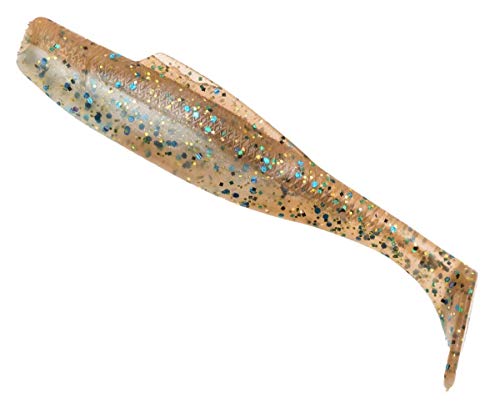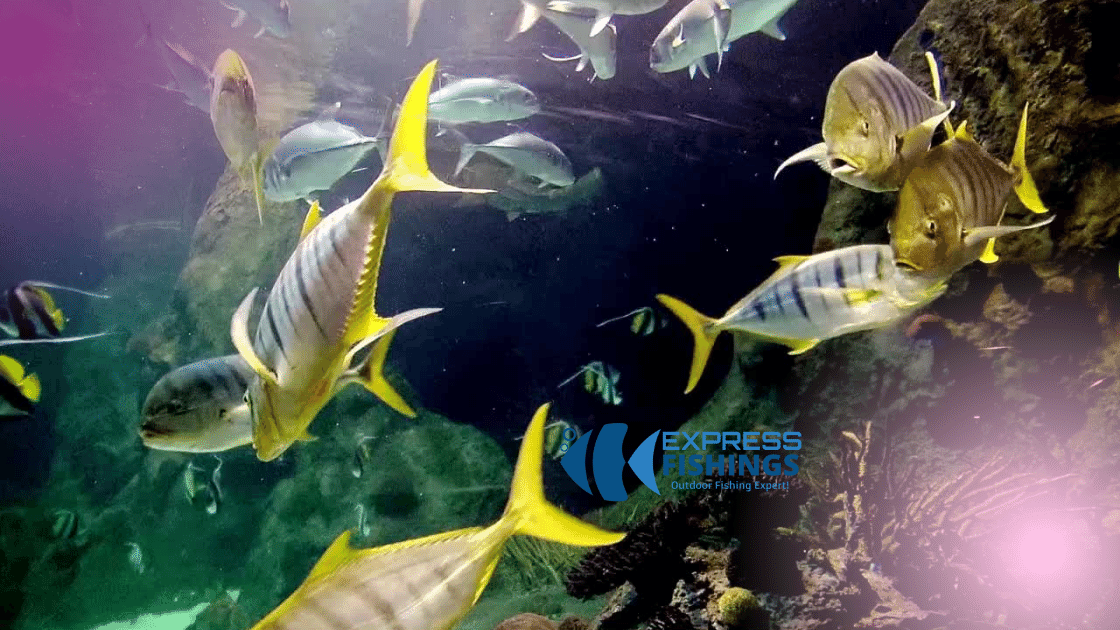My first experience with reds fishing was a success.
As the sun set below the marshes I stood in a small boat and could see their tails grazing the shallows. I armed myself with some shrimp and sent my rig straight up to them. My hook was eaten as soon as it touched the water. As the fish began to fight, my slip floor was soaring sideways.
This is my type of fishing and I have never forgotten it.
The Sciaenops is a fantastic fish to chase and eat, regardless of whether you call them reds or channel bass, or red drum. Redfish are as predictable as taxes. The more you know them, the easier it is to catch.
We want to help you learn more about these gorgeous, easy-to-catch fish. Below is a guide to the species and some of our top redfish tips.
Redfish Basics: What you Need to Know
Sciaenops Ocellatus is a copper-colored fish that can grow to an average length of 28-33 inches at maturity, which occurs between ages 3 and 5. Bull reds, or as they are affectionately called, grow larger with age. They can even weigh in at close to 100 pounds.
These fish are common in the Gulf of Mexico and the southern Atlantic. Anglers from Virginia and Texas recognize them by their brightly colored scales and large dark eyespots near their tails.
Red drums are a common name for redfish. The males use their swim bladders to make a drumming sound that attracts females during spawning. Redfish mate in shallow coastal water from August to September and release millions of eggs each female.
Habitat and Diet
Redfish enjoy a diverse diet that changes with the seasons. Redfish eat crab, shrimp, and mullet in the warmer months. In winter, they eat small fish like pinfish, spot, and spot.
Crabs, live shrimps, and minnows are all popular choices for live bait.
The best live bait buckets available for boats
Redfish are fervent predators and their down-turned faces make it easy for them to forage on the bottom for food. They are also prey, and they seek shelter from larger fish and other marine mammals.
They are often found around rocks, pilings, and docks. This is why Immature Reds prefer shallow marshes, although I have also caught keepers sight-fishing in shallows.
How to Catch Redfish: Our Top Redfish Fishing Tips
Variegate Your Live Bait Selections Depending on the Season
Reds will change their diet according to the season and hatch. Experienced anglers can be flexible with their choices of live bait.
These are our top picks for the best bait and lures for redfish
They are a great choice when the shrimp are running and the weather is warm. It is very simple to rig shrimp on a hook. The goal is to secure the bait and keep it alive as long as possible.
This video will give you a quick refresher on how to rig shrimp.
Also, blue crabs are a great option for larger reds. It takes only a few minutes to rig them. Charlie Gray, an Alabama charter captain is a huge fan of crabs. I prefer small blue crabs that measure 3 to 5 inches in length. They are rigged on 3/0-7/0 circle hooks with 3-4 feet of fluorocarbon leader, which weighs 30- to 40 pounds. A 2- to 4-ounce egg sinker is added above the swivel that connects the leader to the main braid of 30- to 50-pound weight.
This video will show you how to hook a crab with a hook.
Reds are attracted to minnows in cooler temperatures. This is good news because they can be caught in a cast net. I usually prepare several aerated buckets of water and make a few cast nets under bright lights. This gives me plenty of bait for the weekend.
Take a look at these videos if you’re interested in learning how to rig a minnow.
Cut baits like mullet are a good choice. Similar to the minnows I prefer to catch my fish so I have fresh, live fish. This gives me a better flavor and smell for the reds.
You need a reminder of how to prepare and rig the cut bait. This video will help you remember how to prepare and rig cut bait.
These options leave me with two choices: I would either use strong monofilament for my terminal tackle or, if I was spooling on braided, add 2 to 3 feet worth of fluorocarbon leader.
If you are looking for mature reds, a 10-pound line with a 20-pound fluoro leader is ideal. For bulls, a 30-pound braid with a 60-pound leader would be a good choice. Mono for mature reds has been run at 12 to 20-pound strengths and I have never experienced any problems.
Use high-quality circle hooks
Some anglers prefer to use a “J-hook”, but I believe that a high-quality, circle hook is the best choice. Because of their unusual shape, circle hooks can snag by themselves and don’t require a hookset. Simply tighten your line and the hook will do all the work.
The goal when using minnows or shrimp is to keep the bait alive as long as possible. Thin wire hooks can be a great choice. I love the Gamakatsu Nautilus Light Circle and Owner’s Mutu Light Circle Hook.
You should look for sizes that range from 3/0 up to 7/0. Match the hook with the red size you want.
Keep this tip in mind: If you can’t grab the rigged hook easily with your hand, so can the red!
Work Shallow Coverage and Structure
Reds will congregate in areas they feel safe, such as mangrove roots or pilings. This often means that they prefer shallower water with plenty of grass to hide in. John Eggers, a Florida charter captain, says, “I look out for open areas and submerged grass in water 2-3 feet deep.” Reds can use this area to lure mullet or other bait.
Captain John Gribb concurs. He says that “inshore redfish” spend most of their time in water less than 2-feet deep. On the low tide flats, they almost always infiltrate schools.
This may sound strange to those who are used to fishing deep water, but reds move in places where larger predators cannot use their speed to catch them. Salt marshes are where I fish, with reds often found in shallow water in tall grass in coves you would not think could hold fish this large and numerous.
A great way to tell if you are on the fish is by watching for their tails. They will often cruise in shallow water!
Fish the Tide
If there is one secret to catching more red drums, it is fishing the tides.
Local knowledge is crucial because it allows you to accurately predict the impact of changing tides. Bryan Watts, a noted redfish pro, says that the biggest difference in tides for tournament red fishermen is between Atlantic tides or the East Coast tides. On the East Coast, big tides of 4- to 6-foot are common – Fernandina, Fla., Jacksonville FL, and all the way up to North Carolina. We are dealing with tides of between 2 and 4 feet here on Florida’s West Coast. Reds will move faster if there is a greater tidal shift.
They may even not move at all if they are fished far enough inshore that tidal changes have minimal impact.
Low tide is the best time to fish, so most red anglers search for schools of small-sized fish in shallow waters. As you do, they know that the water’s current concentrates them into pockets where they can school and feed fervently.
Low tide isn’t the only moment that is hot. Redfish are attracted to a moving tide because it attracts baitfish into the area they hunt. Gibb explains that half-tide rising water floods oyster banks, grass banks, and points. Then baitfish, shrimp, and crabs flee these safe-havens, while redfish stage nearby, waiting for enough water depth to advance.
You will know where to go when the water rises.
The good news is: Pros like Ben Alderman say that redfish follow predictable routes through these tidal changes. “These reds travel the same routes to and fro their low- and higher-water haunts with such punctuality it’s amazing… I know precisely when a group red will pass a specific point on the outgoing tide, and what time they’ll return on the high tide.”
It is important to understand these patterns and study reds’ movements, then be able to ambush them when they pass.
Alderman agrees with Gribb that fish groups use points to migrate out of creeks at a falling tide. They will hold on to the marsh grass line, where the water is the highest.
You’ll soon be able to pull them in if you know the reds’ patterns!
Soft plastics are important!
Although live bait is the best choice, soft plastics should be considered an option. For example, paddle-tailed minnows, a Louisiana staple, are great for matching hatch colors. They can be used under a popping cork such as the Cajun Thunder or simply rigged to run over grass and ground cover.
The Z-MAN Diezel MinnowZ 4-inch in color is my favorite, especially when the shrimp run.
The 4-inch Zoom Super Flukes in the colors “Baitfish”, and “Smokin’ Shad” are also a great choice.
Last Thoughts
These tips should have helped you improve your Red’s fishing skills. This is the best fishing you can do inshore and offshore.
Please leave a comment below if you have any suggestions!








